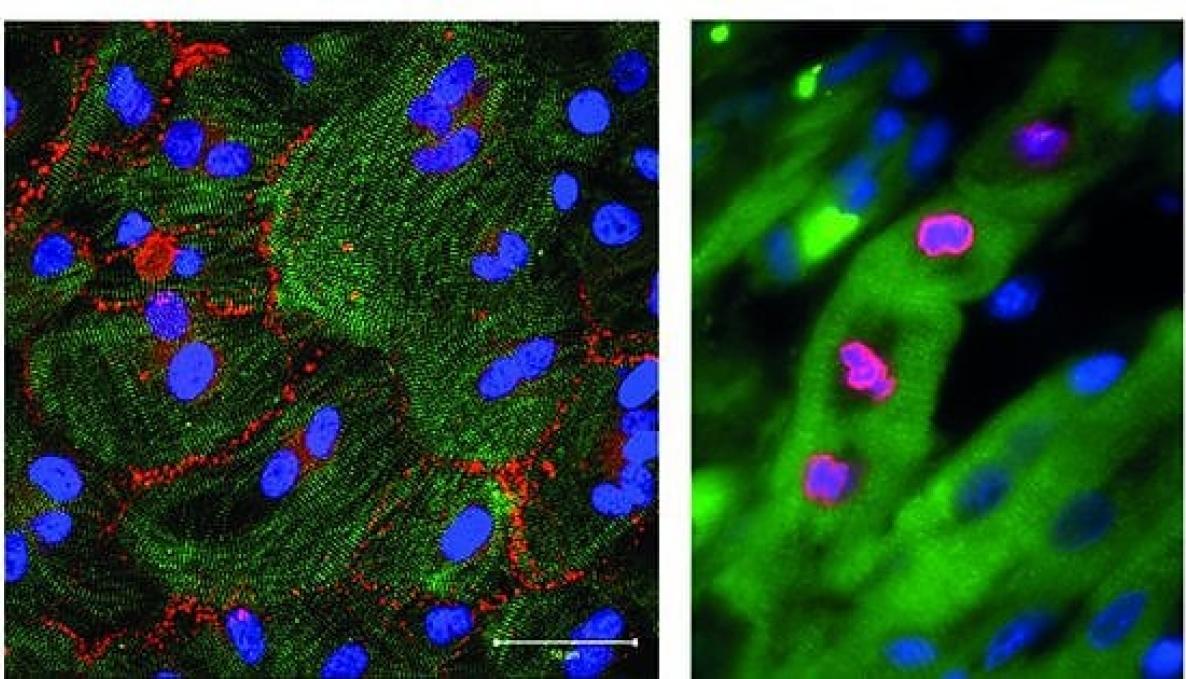A novel gene therapy for infarction treatment: Sant’Anna School and ICGEB Trieste researchers published a study in Nature journal. MicroRNAs play a new role in cardiac repair

A team of researchers from Pisa Sant’Anna School Life Sciences Institute, and the International Centre for Genetic Engineering and Biotechnology (ICGEB) –Trieste have found that “MicroRNA therapy stimulates uncontrolled cardiac repair after myocardial infarction in pigs”. The study was published in Nature journal with the collaboration of Fondazione Monasterio and the la School of Cardiovascular Medicine & Sciences of King’s College - London under the supervision of Giovanni Aquaro, Fabio Recchia and Mauro Giacca.
Cardiovascular diseases and myocardial infarction remain global health problems. According to the World Health Organization reports, there are 32.4 million myocardial infarctions and strokes worldwide every year. Patients with previous myocardial infarction and stroke are the highest risk group for further coronary and cerebral events.
The heart is unable to regenerate heart muscle after a heart attack and lost cardiac muscle is replaced by scar tissue. Over time, the heart muscle eventually fails leading to the development of heart failure. The paper published in Nature journal, titled “MicroRNA therapy stimulates uncontrolled cardiac repair after myocardial infarction in pigs”, shows that human microRNA-199a in infarcted pig hearts can stimulate cardiac repair. One month after myocardial infarction and delivery of this microRNA through an adeno-associated viral vector, treated animals showed marked improvements in both global and regional contractility, increased muscle mass and reduced scar size.
The heart of mammals and those of urodeles and fish are capable of spontaneous regeneration. New tissue formation occurs through the partial de-differentiation of already existing cardiomyocytes, followed by their proliferation. In adult mammals, cardiomyocyte proliferation is only marginally increased after myocardial infarction, but remains far below clinically relevant levels. Therefore, researchers argued that empowering the endogenous capacity of cardiomyocyte proliferation after damage is a potential strategy for achieving cardiac repair.
“We are currently testing the MicroRNA approach for safety and efficacy in clinical trials” said Fabio Recchia and Mauro Giacca. “The delivery of this microRNA through an adeno-associated viral vector showed that achieving cardiac repair through the stimulation of endogenous cardiomyocyte proliferation is attainable in large mammals, however dosage of this therapy needs to be tightly controlled. In particular, our previous work revealed that adeno-associated viral vector miRNAs, including hsa-miR-199a-3p, can stimulate rodent cardiomyocyte entry into the cell cycle and cardiac regeneration after MI in mice11”.
“This is an exciting new therapeutic approach to replace the damaged myocardium” they added. “After 15 years of study, stem cells still hold great promise for regenerative medicine and MicroRNAs have been shown to be an important clinical tool”.
Sources of Funding
This work is supported by RF-2011-02348164 ‘CardioRigen’ of Italian Ministry of Health and the Advanced Investigator Grant - European Research Council (ERC).
Cover photo: immunofluorescence in heart sections from pigs treated with miR-199a. Source: Mauro Giacca



